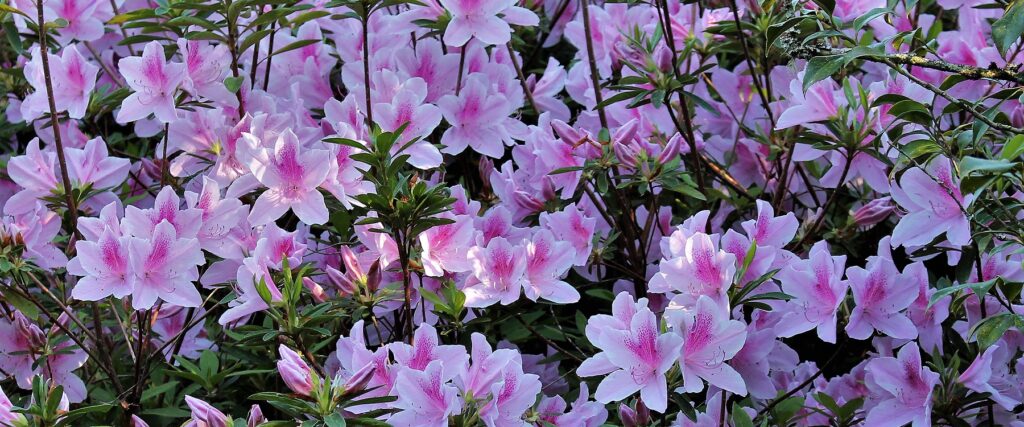Helleborus Orientalis is one of the earliest flowering perennials. It blooms in February or March and is seen as a true harbinger of spring. Because it usually blooms during Lent, Helleborus Orientalis is called Lenten Rose. People living in places where winter is severe, plant Helleborus near the kitchen window, patio or walkway so that they can enjoy the early bloom to their hearts’ content.
Belonging to the ‘Ranunculaceae Family,’ HELLEBORUS, a Eurasian genus, consists of approximately twenty species of herbaceous or evergreen perennial flowering plants. The name Helleborus is derived from the Greek words elein meaning ‘to injure’ and bora meaning ‘food,’ a direct reference to the fact that the leaves, stems and roots of Helleborus plant are poisonous to humans if ingested. The sap may cause skin irritation as well.
Lenten Roses are in fact cultivars that are hybrids between Helleborus Orientalis and other species. Their flowers last for a few months and are available in a range of whites, yellows, pinks, and purples, often spotted or with darker edges. Most varieties of Lenten Roses are evergreen, with large, toothed, divided leaves. They prefer semi-shade and moisture retentive, well-drained and neutral to alkaline soil. They flourish in the shade of high-branched trees or on the north or east side of buildings. However, they need protection from strong, winter winds. Lenten Roses naturally hybridize and self seed. Most deciduous species retain their old leaves over winter. These leaves should be cut off in early spring as flower buds develop. They are excellent in woodland gardens. Ashwood Garden hybrids, Bradfield hybrids and Harvington hybrids are some of the common Helleborus Orientalis subspecies that are available as Lenten Roses. Typically sold in autumn, Helleborus can be planted year round and Southern Wood Fern is a good companion plant for it.
Celebrated in songs and stories, Helleborus Niger (Black Hellebore) is commonly known as Christmas Rose as it blooms in winter. It too is an evergreen perennial with large, bowl shaped glistening white flowers with golden stamens. They grow in zone 4 to 8 and ‘HGC Jacob’, ‘HGC Josef Lemper’ and ‘Potter’s Wheel’ are some of the common species of Christmas Roses.
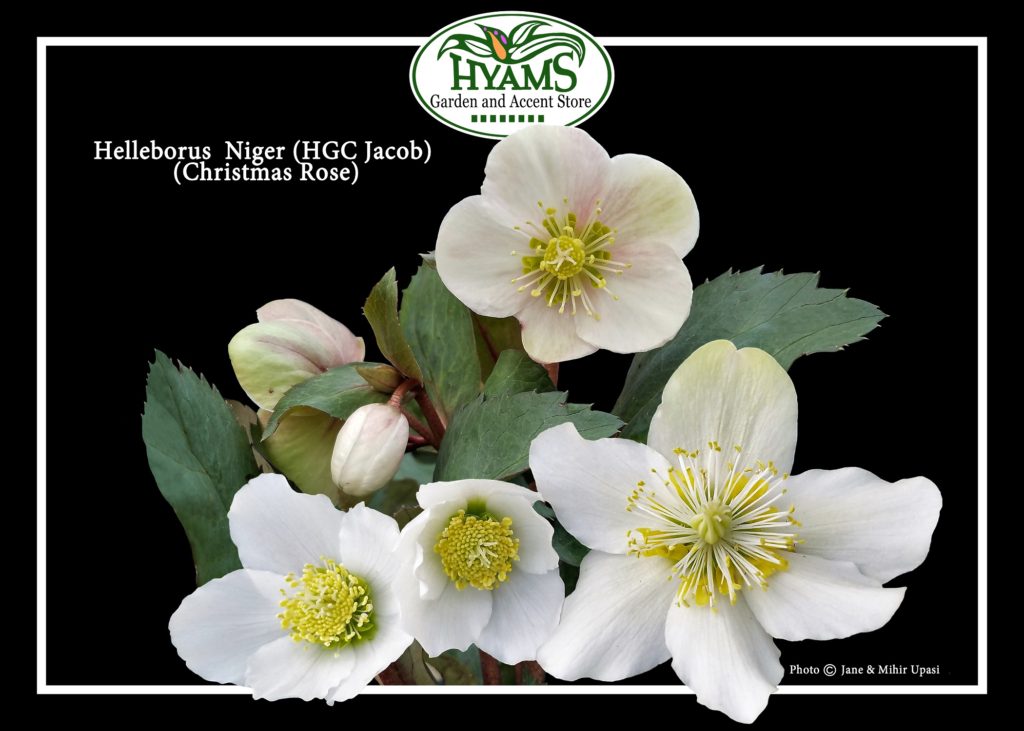
The 2019 Edition of Encyclopedia of Plants and Flowers, edited by Christopher Brickell lists some of the following Helleborus species:
Helleborus x ericsmithii ‘Bob’s Best’ is an evergreen, clump-forming perennial with toothed, green leaves flushed in pewter and divided into 3-5 leaflets. From midwinter to late spring it bears saucer-shaped, pink-tinted, white flowers. It prefers partial shade, well-drained soil and is fit for zones 6 to 9.

Helleborus Argutifolius, synonymously called Helleborus Corsicus or Corsican Hellebore is an evergreen, clump forming perennial. It has divided, spiny, dark green leaves. Cup-shaped, pale green flowers are borne in large clusters in winter and spring. This species grows in zone 6 to 9.
Helleborus Lividus is a subspecies of Helleborus Argutifollius. It is an evergreen, clump-forming perennial. It has three-lobed, mid green leaves, marbled pale green, and purplish-green below with obliquely ovate, slightly toothed or entire leaflets. It produces large clusters of cup-shaped, purple-suffused, yellow-green flowers in late winter. This species grows in zone 8 and 9.
Helleborus Odorus is a semi-evergreen, clump-forming perennial with deeply divided, deep green basal leaves, hairy beneath with five central leaflets. From early winter to early spring this species bears clusters of three to five fragrant, saucer-shaped, bright green to yellow-green flowers. It prefers partial shade and moist soil and grows in zones 4 to 8.
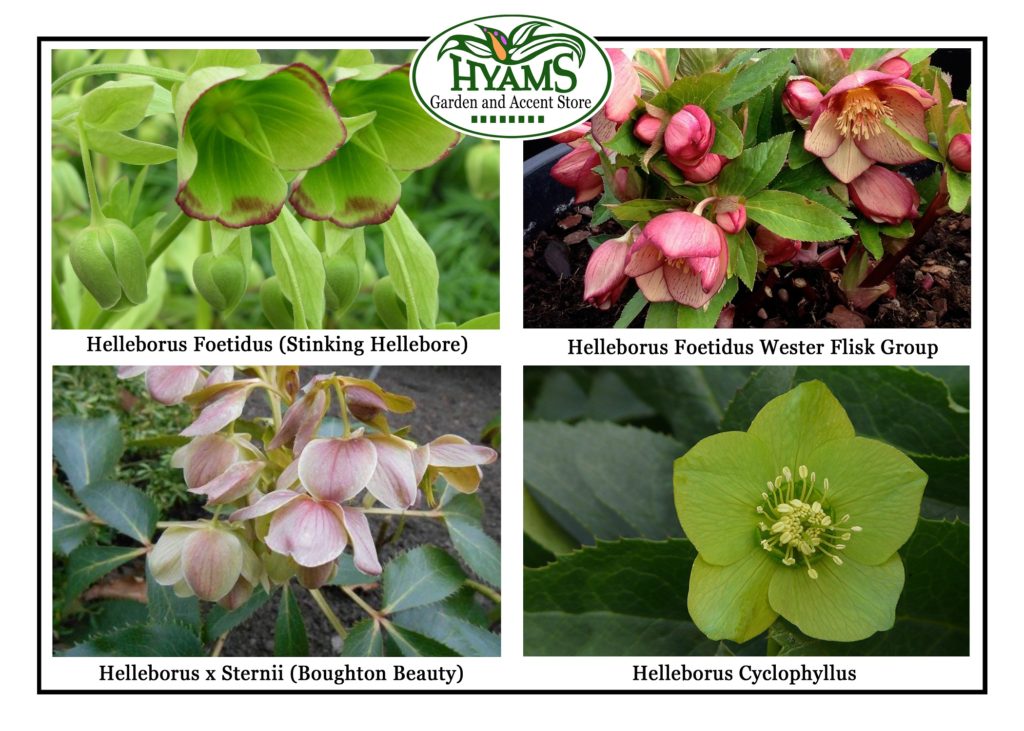
Helleborus Foetidus (Stinking Hellebore) is an evergreen, clump-forming perennial with deeply divided, dark green leaves. In late winter and early spring panicles of cup-shaped, red-margined, pale green flowers bloom on this plant. It prefers partial shade and well-drained soil and grows in zones 6 to 9.
Helleborus Foetidus Wester Flisk Group is an evergreen, semiwoody perennial. In winter and spring it bears small cup-shaped, purple-rimmed pale green flowers on floppy, red-green stems. It has red-stalked, dark gray green leaves divided into slender, slighted toothed leaflets. It prefers partial shade and moist soil and grows in zones 6 to 9.
Helleborus x Sternii (Boughton Beauty) is an evergreen, clump-forming perennial with purple-pink stems and divided veined, mid green leaves. It winter and early spring it bears cup-shaped, pink-purple flowers with green insides in terminal clusters. This species prefers partial shade and moist soil and is fit for zones 5 to 8.
Helleborus Cyclophyllus is a clump-forming perennial with palmate, deeply divided, bright green leaves. In early spring, this species produces shallowly cup-shaped, yellow-green flowers with prominent, yellowish-white stamens. It prefers partial shade and moist soil and grows in zones 6 to 9.
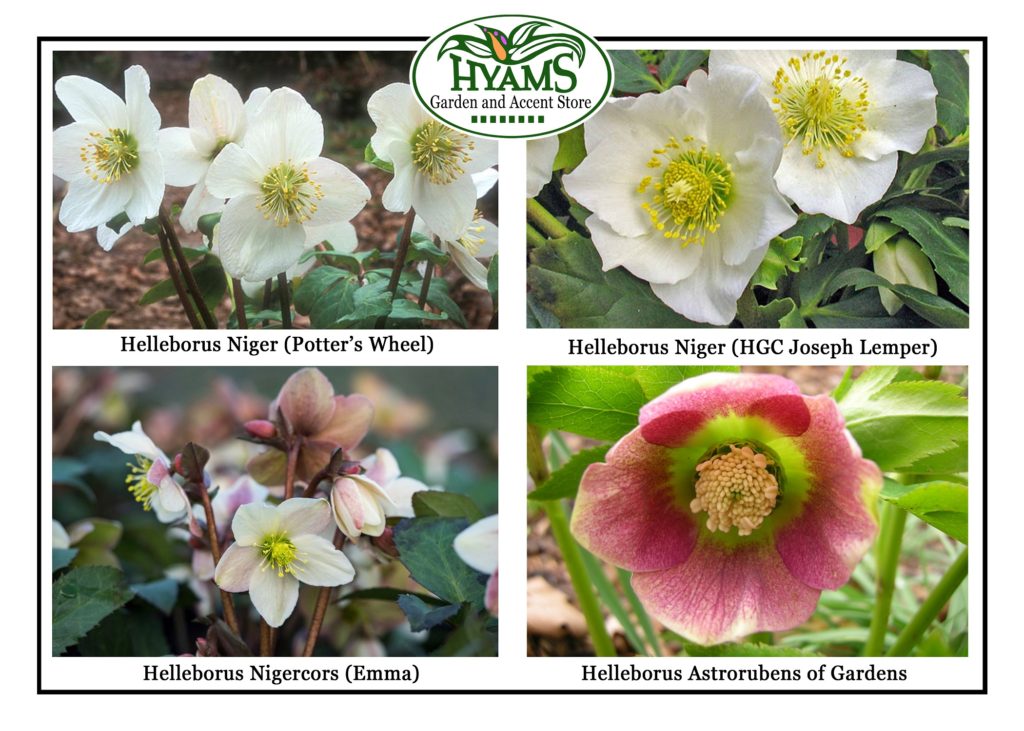
Helleborus Niger (Potter’s Wheel) is an evergreen, clump-forming perennial with divided, deep green leaves. In winter or early spring it bears cup-shaped, nodding, pure white flowers with overlapping petals and green “eyes.” This plant prefers partial shade and well-drained soil and is fit for zones 4 to 8.
Helleborus Niger (HGC Joseph Lemper) is an evergreen, clump-forming, upright perennial with divided, rich dark green leaves. From mid-fall to late winter it bears slightly fragrant, rounded, pure white flowers with overlapping petals on sturdy stems. This plant prefers partial shade and well-drained soil and is fit for zones 4 to 8.
Helleborus Nigercors (Emma) is a compact, evergreen, clump-forming perennial. It has matte green leaves. It freely bears branched clusters of saucer-shaped white flowers that age to grayish-pink from midwinter to early spring. It prefers partial shade and well-drained soil and is fit for zone 4 to 9.
Helleborus Astrorubens of Gardens or synonymously known as ‘Early Purple Groups’ is a clump-forming perennial and has palmate, deeply divided, toothed, glossy, dark green leaves. It is a subspecies of Helleborus Orientalis Abchasicus. In late winter it bears shallowly cup-shaped, deep purple flowers. It is fit for zones 4 to 8.
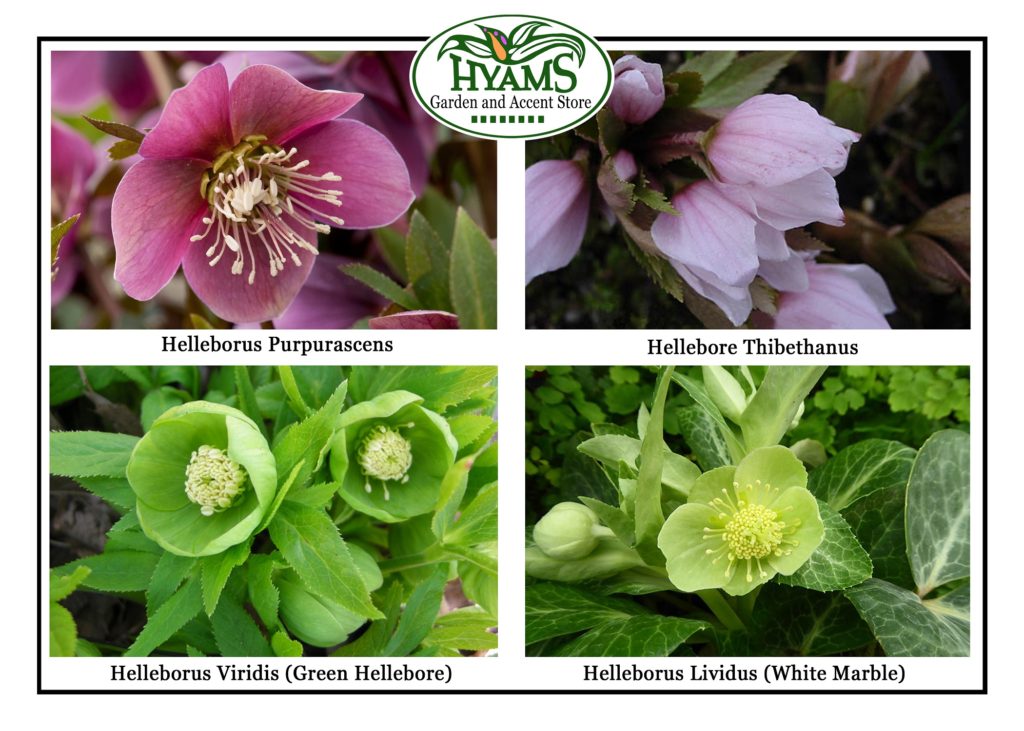
Helleborus Purpurascens is a neat clump-forming perennial. In early spring it bears small, nodding, cup-shaped, deep purple or green flowers splashed with deep purple on outside. It has dark green leaves that are palmate and deeply divided into narrowly lance-shaped, toothed segments. This plant prefers partial shade and moist soil and is fit for zones 4 to 8.
Hellebore Thibethanus is a clump-forming perennial with palmate mid-green leaves deeply divided into 7 to 9 toothed lobes. In late winter and early spring it bears deeply cup-shaped flowers that vary from white to white with pink veins, which darken with age. This plant prefers partial shade and moist soil and is fit for zones 5 to 8.
Helleborus Viridis (Green Hellebore) is a deciduous clump-forming perennial that has dark divided green leaves. Fit for zones 6 to 9, this plant bears cup-shaped green flowers.
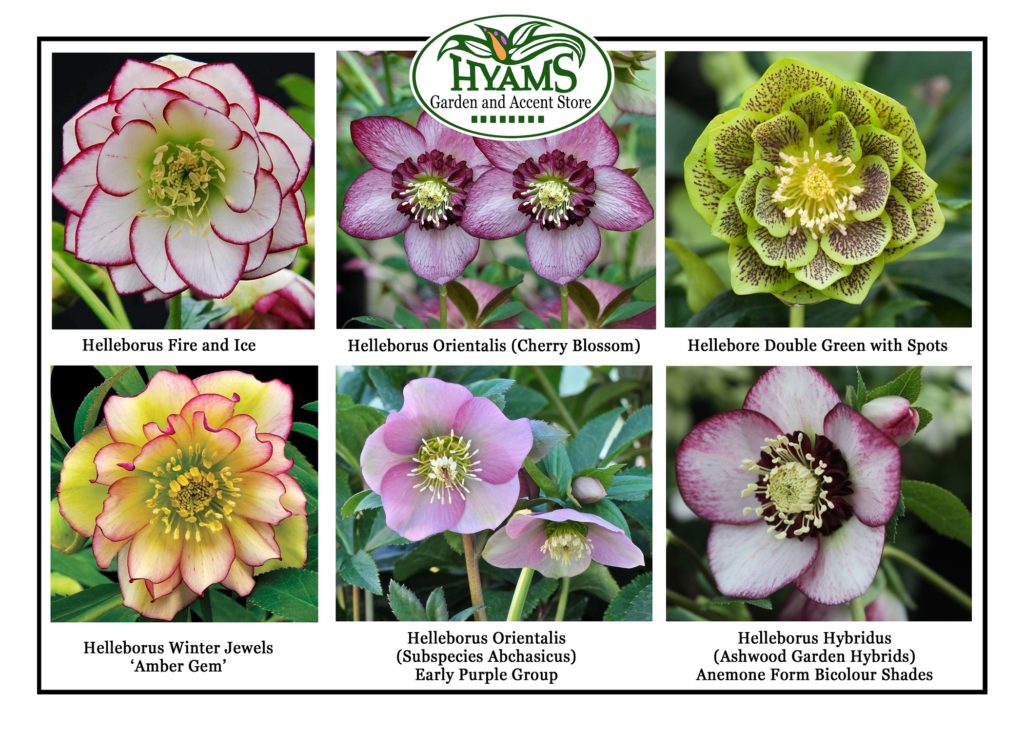
Though Helleborus Orientalis is called Lenten Rose and Helleborus Niger is called Christmas Rose, this perennial is not a rose at all. It is called as such because the flowers somewhat resemble a small single rose and bloom in early spring. Lenten Rose symbolizes serenity, tranquility and peace. On the other hand, it can also represent a scandal or anxiety. Christmas rose, on the other hand, represents purity. That is why it has often been carved into confessionals as a five-petal flower. The symbolic significance being a penitent who goes into the confessional to seek forgiveness for sins, walks away having his or her purity restored.
By Marshal and Jane Upasi
